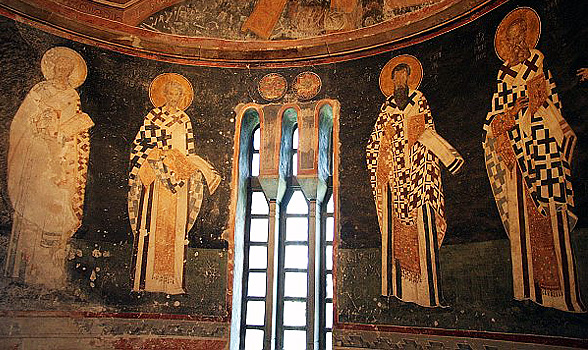Before visiting Chora Museum we suggest
Before visiting the museum we suggest you wander around to prepare your spirit for that era, after visiting it have a cup of tea at one of the cafes around to absorb the exquisiteness of the museum. Have in mind that the Asitane Restaurant located in the Kariye Hotel is one of the most presumptuous Ottoman kitchens in Istanbul, but do not forget to make a reservation in advance. A small note, Asitane is one of the old names given to Istanbul.
Here is some general information on Kariye:
Kariye is located at Edirnekapı. The dictionary meaning of Kariye (Chora) is “outside of the city”, or “rural” in old Greek. The existence of a chapel outside the city walls in ancient times is mentioned in some sources. The first Chora Church was built on the site of this chapel by Justinianus. The building that managed to survive until the Commenos with several additions and repairs, gained importance when the Imperial Palace Blakhernia near the city walls was expanded. At the end of 11th century Maria Dukaina, the mother-in-law of Emperor Alexi I had it rebuilt.
Kariye Museum is the most important Byzantine monument in Istanbul after Haghia Sophia. The inside walls are decorated with excellent 14th century frescoes and mosaics. Illustrating scenes of Christ’s and the Virgin Mary’s lives with their brilliant colors symbolize the dynamism of Byzantine art. Restored wooden houses in the area surrounding the church offer tea and coffee in a relaxed atmosphere far away from the city’s hectic pace.
The building was used as a church after the conquest of Istanbul in 1453, then converted into a mosque in 1511 by the Vizier Grand Hadım Ali Pasha, who later added a school and a kitchen next to it. After the conversion, the mosaics and frescoes were covered either by wooden works or by whitewashing. All the mosaics and frescoes were again uncovered between 1948 and 1958 by the American Institute of Byzantine Research. Chora mosaics and frescoes are the most stunning examples of the last period of Byzantine art (14th century). They show a striking similarity. The monotonous background of the former period cannot be seen here. The concept of depth, recognition of the smoothness and movement of the figures are the characteristic of this style.


